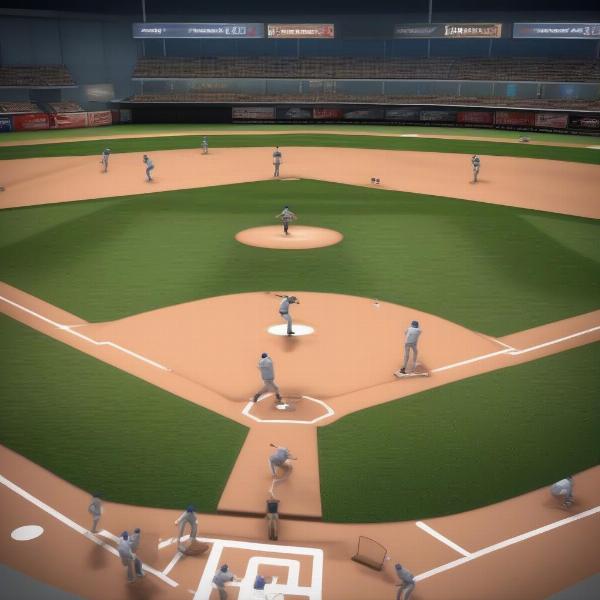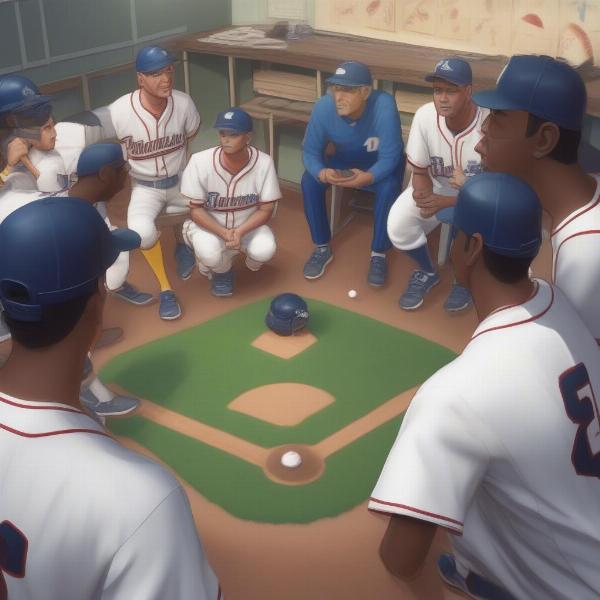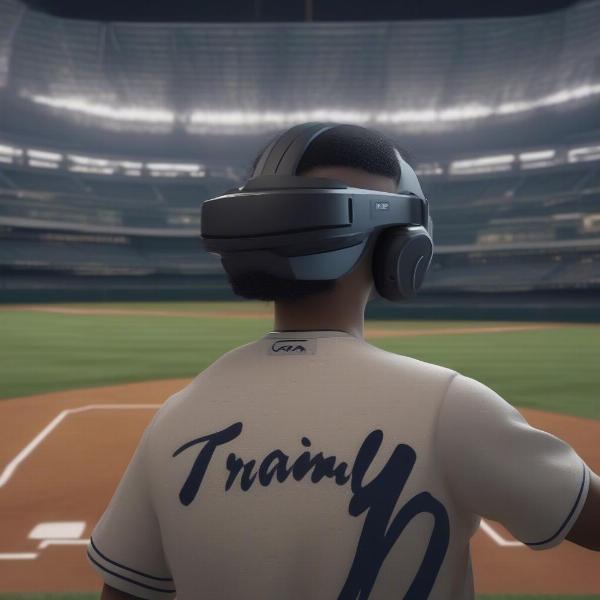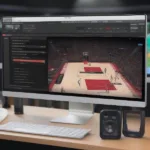A simulated game in baseball is essentially a controlled practice environment designed to replicate game-like scenarios. It allows players to hone their skills, strategize, and maintain their form without the pressures of a real competition. These simulated games are invaluable for both individual player development and team cohesion.
Understanding the Basics of Simulated Baseball Games
Simulated games fill a crucial gap in baseball training, bridging the space between regular practice drills and live games. They provide a more dynamic and realistic setting than isolated drills, enabling players to experience the flow and rhythm of a game. Think of it as a dress rehearsal before the big performance. This helps maintain sharpness, especially during periods of inactivity like the off-season or during injury recovery. Coaches can tailor the simulations to focus on specific skills, whether it’s bunting, hitting specific pitches, or defensive positioning.
Why are Simulated Games Important?
- Skill Development: Players can practice specific situations, like hitting with runners in scoring position or fielding tricky ground balls, repeatedly until they master the skill.
- Strategic Practice: Teams can work on their game plan, such as executing hit-and-runs or defensive shifts, in a controlled setting.
- Maintaining Game Shape: Simulated games help players stay sharp and game-ready, particularly during periods when live games aren’t possible.
- Injury Rehabilitation: They offer a controlled environment for players returning from injury to regain game speed and test their recovery progress.
 Simulated Baseball Game Practice Scenario
Simulated Baseball Game Practice Scenario
Different Types of Simulated Games
Simulated games can take on various forms depending on the specific needs of the team or player. They can range from simple scenarios with limited players to complex simulations involving the entire team. Here are some common types:
- Intra-squad Scrimmages: These involve splitting the team into two groups and playing a game against each other. It provides the most game-like experience.
- Controlled Scrimmages: Coaches dictate specific situations and actions to practice certain plays or strategies repeatedly.
- Live Batting Practice: While not a full game, it allows batters to face live pitching in a game-like setting, focusing on hitting and timing.
- Defensive Drills within a Game Context: Fielders practice reacting to different batted ball scenarios within a simulated game framework.
Tailoring Simulations for Specific Needs
The beauty of simulated games lies in their adaptability. Coaches can tailor these simulations to focus on individual or team weaknesses, experiment with new strategies, or prepare for specific opponents. For example, if a team struggles against left-handed pitching, they can simulate games with a focus on left-handed pitchers.
 Baseball Simulated Game Strategy Practice
Baseball Simulated Game Strategy Practice
The Benefits of Simulated Games Extend Beyond the Field
Simulated games are not just about physical practice; they also offer valuable mental preparation. They allow players to visualize game situations, develop their instincts, and build confidence in their abilities. This mental conditioning can be just as crucial as physical conditioning for success on the game day.
The Mental Edge of Simulation
- Enhanced Focus: Players can practice maintaining concentration in a game-like environment, improving their ability to stay focused during crucial moments.
- Decision-Making Practice: The dynamic nature of simulations forces players to make quick decisions under pressure, enhancing their game awareness and instinct.
- Confidence Building: Successfully executing plays and strategies in a simulated environment boosts player confidence and prepares them for the real game.
Leveraging Technology in Simulated Baseball Games
Technology is increasingly playing a role in enhancing simulated baseball games. Virtual reality and advanced analytics are providing new tools for creating even more realistic and insightful training experiences.
The Future of Simulation
- Virtual Reality Integration: VR technology can immerse players in realistic game scenarios, providing a truly immersive training experience.
- Data-Driven Analysis: Advanced analytics can track player performance in simulations, providing valuable insights into their strengths and weaknesses.
 Virtual Reality Baseball Training
Virtual Reality Baseball Training
Conclusion
A simulated game in baseball offers a valuable bridge between practice and real-game performance. It allows for targeted skill development, strategic practice, and maintenance of game shape, both physically and mentally. By utilizing simulated games effectively, teams and players can gain a competitive edge and achieve peak performance on the field. From individual drills to full-team scrimmages, simulated games are an essential component of a comprehensive baseball training program. So, next time you see a team practicing, remember the power of the simulated game – the secret weapon behind baseball success!
FAQ
-
What is the primary purpose of a simulated game in baseball? To provide a realistic game-like environment for practice and skill development.
-
How do simulated games differ from regular practice drills? Simulated games offer a more dynamic and game-like experience, incorporating multiple skills and strategies simultaneously.
-
Are simulated games beneficial for both individual players and teams? Yes, they benefit individuals by focusing on specific skill development and teams by facilitating strategic practice and team cohesion.
-
Can simulated games be used for injury rehabilitation? Absolutely, they offer a controlled environment for players to regain strength and test their recovery progress.
-
How is technology impacting simulated baseball games? Virtual reality and advanced analytics are providing new tools for creating more realistic and data-driven training experiences.
-
What are some examples of different types of simulated games? Intra-squad scrimmages, controlled scrimmages, live batting practice, and defensive drills within a game context.
-
Why are simulated games important for the mental aspect of baseball? They enhance focus, improve decision-making under pressure, and build player confidence.

